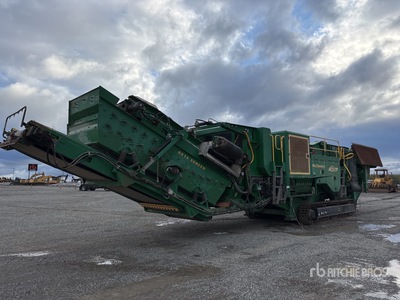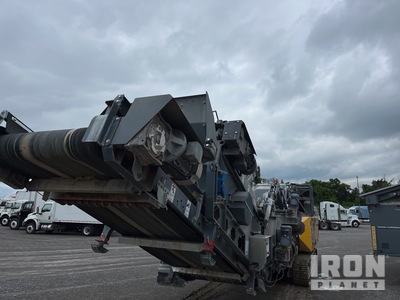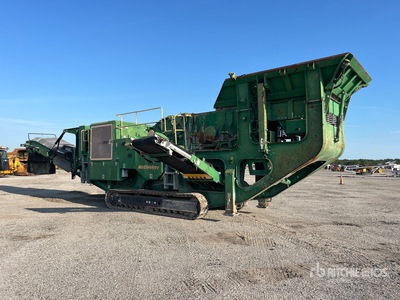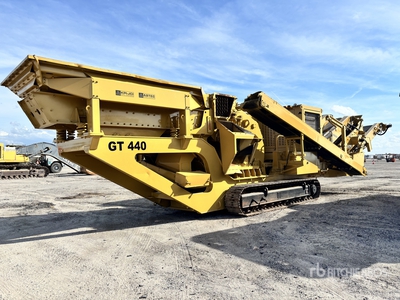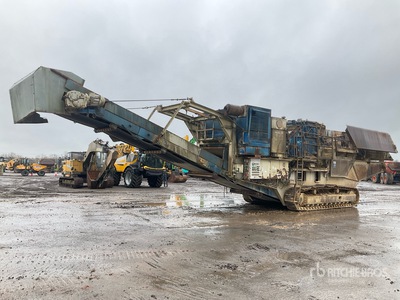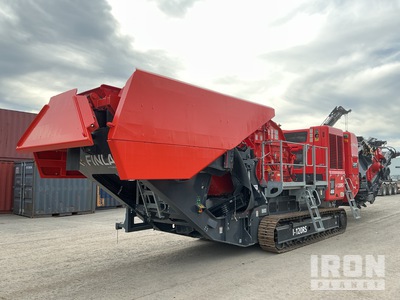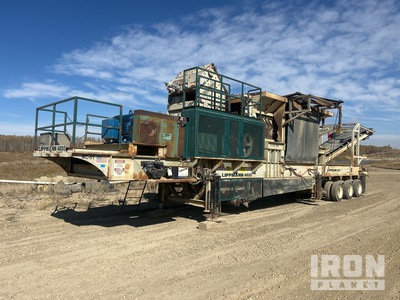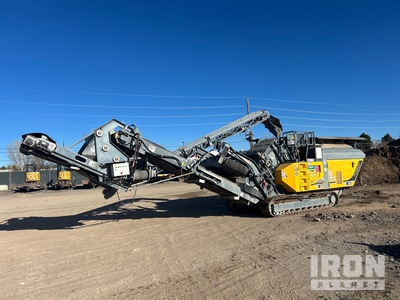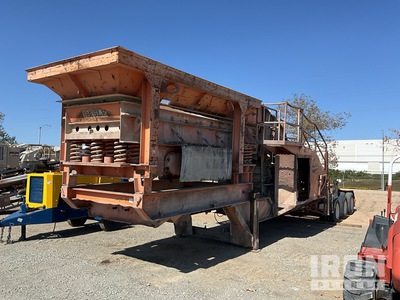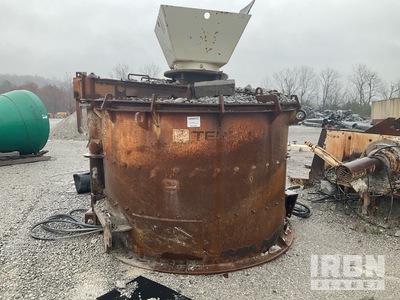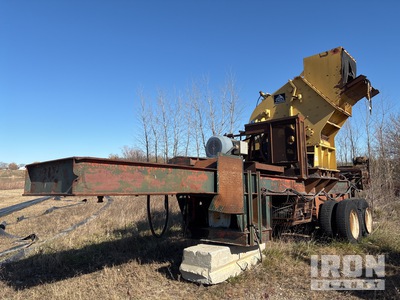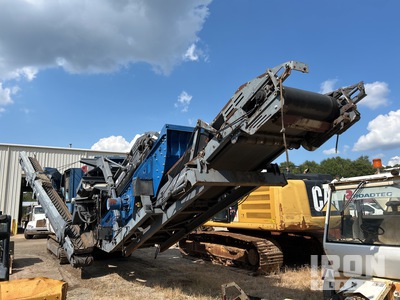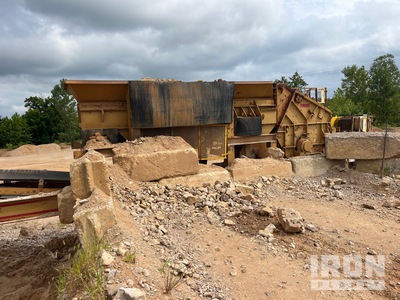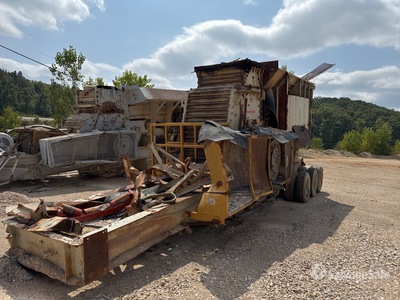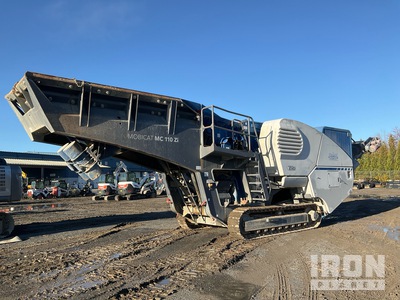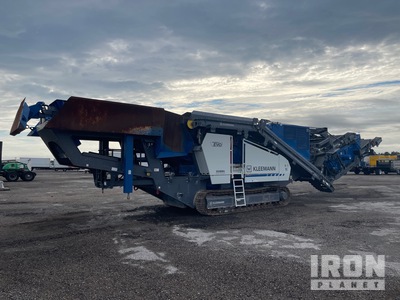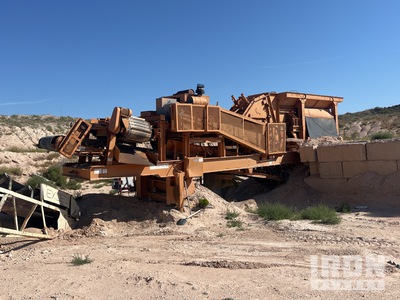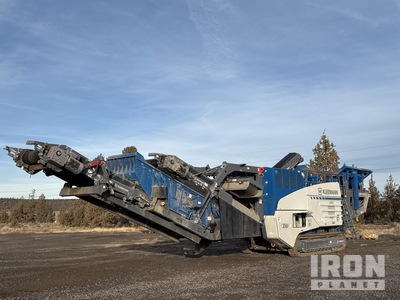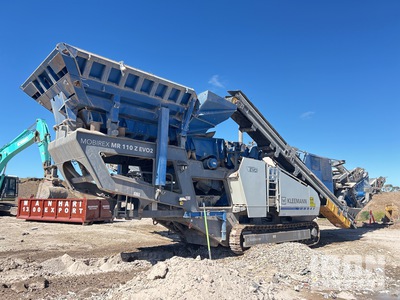필터
결과 33개 중 0-33개 표시
Power and impact: crushers that deliver
Impact crushers deliver reduction through speed and force, transforming feed into consistent, specification-ready aggregate. Interest in an impact crusher for sale often centers on two families: horizontal impactors (HSI) and the vertical shaft impactor (VSI). Across quarrying, aggregates production, recycling, and materials processing, these machines are valued for high reduction ratios, cubical product, and flexible configurations that match targets for gradation and shape. Leading models from brands such as Metso, Sandvik, Terex, Powerscreen, and McCloskey are frequently listed, with options spanning stationary, portable, and mobile plants.
How impact crushers work
The impact crushing principle relies on kinetic energy. Material enters a chamber where a high-speed rotor propels it into breaker plates (aprons) or anvils. Fracture occurs upon first contact and further reduction follows as the material strikes additional surfaces and other particles within the chamber. This mechanism produces well-shaped aggregate with fewer elongated particles compared to many compression-based machines. In listings labeled impact rock crusher, rotor diameter, rotor speed, and the arrangement of aprons or anvils are key design variables that influence throughput, reduction ratio, and end-product quality.
Horizontal impactors vs. vertical shaft impactors (VSI)
Two primary architectures define the category: horizontal shaft impactors and vertical shaft impactor designs. Each offers distinct advantages depending on feed, desired top size, and shape requirements.
- Horizontal Impact Crushers (HSI): Material meets blow bars mounted on a horizontal rotor and is redirected against adjustable aprons. HSIs are known for high reduction ratios on medium-hard stone, concrete, and asphalt, with efficient liberation of embedded materials in recycling workflows. Product uniformity is strong, and adjustments to apron settings can dial in top size and gradation with minimal downtime.
- Vertical Shaft Impactors (VSI): Often called a VSI crusher or, in some searches, a vertical shaft impact crasher, the rotor accelerates material vertically and discharges it outward. Reduction happens via rock-on-rock or rock-on-steel collisions inside the chamber. VSIs are prized for shaping and sand production, routinely delivering highly cubical, low-flake product used in premium concrete and asphalt mixes.
Selection typically hinges on end-product requirements. HSIs provide broad versatility and robust reduction; VSIs excel when particle shape, fines control, and manufactured sand are strategic priorities.
Types of impact crushers available
Listings surface a range of configurations to match scale and mobility needs. Stationary plants emphasize maximum capacity, power, and integration with multi-stage spreads. Portable and mobile options balance output with deployment speed and footprint, enabling quick setup at new or temporary sites. Within the VSI class, chambers can be configured for rock-on-rock to maximize shaping, or rock-on-steel to favor efficiency and wear life depending on the feed and target gradation. Across the spectrum, the phrase impact crusher for sale may describe skid-mounted modules, track-mounted units, or complete portable plants with onboard screening and closed-circuit recirculation.
Operating advantages and typical applications
Impact technology lends itself to several performance advantages. Reduction can be achieved in fewer passes, which may lower handling costs. Apron and rotor adjustments offer control over top size and fines. With a vertical shaft impactor, precise shaping contributes to improved workability and strength characteristics in asphalt and concrete, while HSIs often stand out in RAP, concrete, and aggregate recycling where liberation and a clean, uniform product are important.
- Shaping & Cubicality: VSIs routinely achieve premium particle shape with tight spec control for high-performance mixes.
- High Reduction Ratios: HSIs can take larger feed and produce consistent, predictable gradations.
- Setup Flexibility: Mobile and portable units streamline relocation and commissioning across projects.
New vs. used impact crushers
Interest in a used impact crusher for sale reflects the category’s durability and the availability of proven models with known operating histories. New machines bring factory warranties, updated rotor designs, improved liner metallurgy, and latest-generation controls. Used units can deliver attractive acquisition costs with capabilities that remain competitive in modern spreads. Inspection reports, service records, remaining liner thickness, rotor condition, and drive health (bearings, belts, powertrain) provide critical clarity when evaluating previous duty cycles and expected remaining life.
Key Buying Considerations
Matching an impact crusher to production goals involves balancing feed characteristics, target gradation, and lifecycle economics. A structured evaluation process helps determine whether an HSI or a VSI crusher is the most efficient path to spec.
- Feed & Reduction: Maximum feed size, abrasiveness, and moisture content influence rotor selection, liner materials, and apron/anvil configurations.
- Capacity: Nameplate tons per hour should align with upstream blasting, ripping, or primary crushing rates to avoid bottlenecks.
- Product Shape & Fines: Tight specs for cubicality and sand yield often point to a vertical shaft impactor; broader reduction targets may favor HSIs.
- Wear & Operating Costs: Blow bars, anvils, and chamber liners represent recurring costs; metallurgy choices (e.g., martensitic, chrome, ceramic) affect longevity and total cost per ton.
- Mobility & Footprint: Track-mounted and portable frames enable rapid deployment; stationary plants maximize throughput and integration with screening/washing circuits.
- Controls & Adjustability: Hydraulic apron settings, rotor speed control, and automated protection systems improve uptime and repeatability.
Why buy with Ritchie Bros.
Multiple buying formats—live onsite and online auctions, Buy Now, and Make Offer—create flexibility around timelines and pricing strategies. Listings typically include detailed photos, specifications, and inspection information, supporting confident decisions on an impact crusher for sale or a used impact crusher for sale. Market visibility across regions helps surface options ranging from compact mobile units to high-capacity stationary machines, including HSIs and VSI crusher configurations aimed at manufactured sand and premium shaping.
Precision, shape, and value with Ritchie Bros.
Impact crushing stands out where shape, reduction efficiency, and circuit flexibility matter most. HSIs deliver robust reduction on a wide mix of materials, while the vertical shaft impactor specializes in cubical particles and sand production. With consistent availability of an impact crusher for sale—including both new listings and used impact crusher for sale options—selecting the right configuration enables dependable output, repeatable spec, and competitive total cost per ton.
